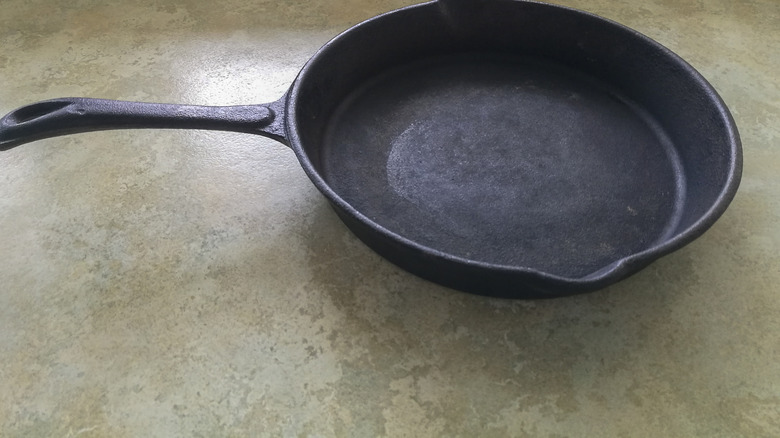The Vintage Cast Iron Skillet Set That Could Be Worth Thousands
Whether cast iron is on your list of vintage kitchen items making a return to your collection, or you've been a cast iron aficionado for years, it's worth noting which brand comes with a staggering price tag. If you come across a set of vintage Wagner cast iron cookware, you could be looking at paying thousands of dollars. The Wagner Manufacturing Company started as a family business in 1891 when brothers Milton M. Wagner and Bernard P. Wagner opened up shop in Sidney, Ohio. The cookware (or "hollowware," as it was also known back then) was carefully crafted with innovative methods that were unmatched at the time.
In 1894, the company released a line of cast aluminum cookware, where employees each worked on one piece to ensure that the pans were smooth on all sides. Wagner manufactured a variety of cookware, ranging from the early release of the Wagner waffle iron in 1892 to griddles, skillets, and Dutch ovens. The different offerings gave consumers the option to purchase the cast iron skillet size they actually needed instead of simply what was available. But before you run to your grandparents' attic to see if there's any vintage Wagner lying around, there are a few things to keep in mind.
Things to keep in mind when sourcing vintage Wagner
Hunting for vintage items is fun, and vintage cookware can easily make you feel like you're living in a different era. But, daydreams aside, you should always check for warning signs before splurging on vintage cast iron — even if it's Wagner — so you know you aren't being duped. Wagner had around 16 different variations of the company logo stamped on the bottom of its cookware over the years. Each logo features the word "Wagner," and some include "Sidney" or "Wagner Ware," as well. The logo is typically located toward the middle of the underside of the pan, usually printed in block lettering style. Always remember to check for the company mark before buying if you're looking for a specific brand name.
If you intend to use the cookware for actual cooking and not just display, make sure that the pan isn't warped or cracked. A warped pan will be unbalanced when placed on a level surface. This can cause uneven heating and can pose a spill hazard when used on a stovetop. Cracked cast iron is another sad sight that can eventually cause the whole pan to split. Even before it gets to that point, however, cracks are havens for harmful bacteria and — in the case of cast iron — rust. Rusty cast iron isn't necessarily a dealbreaker, and it can usually be restored with some lemon juice and elbow grease, but if you find vintage cast iron that isn't food safe, it's best used for display, instead.

